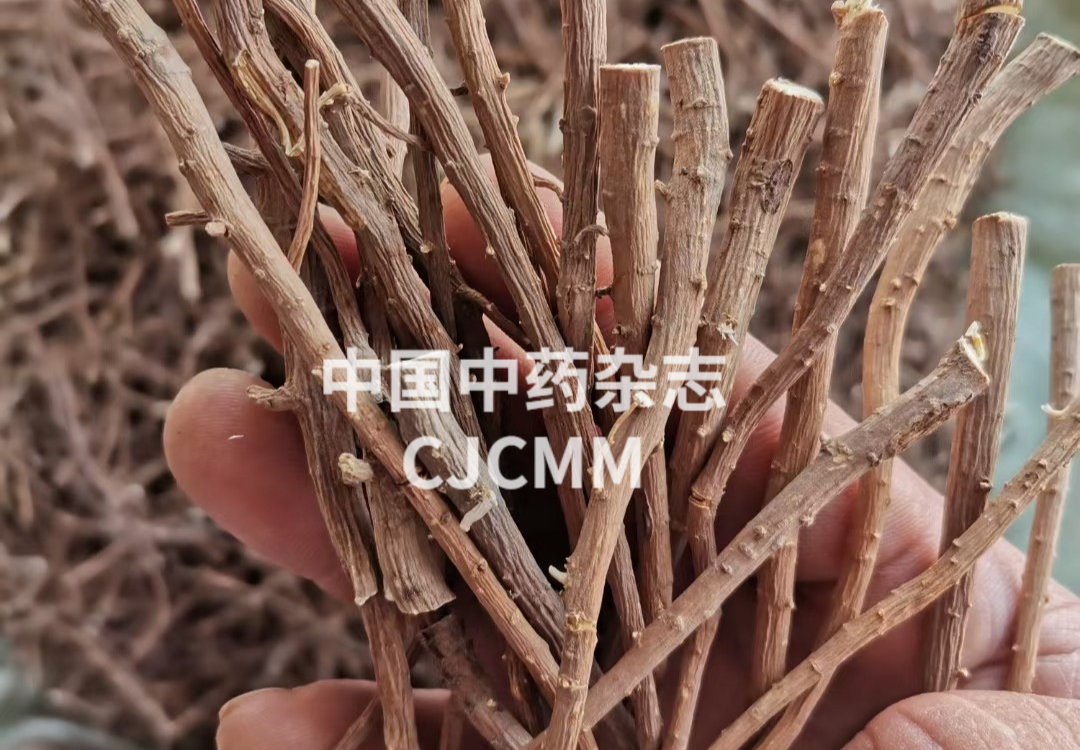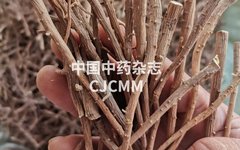
Author | Mu Mu Editor | Chun Feng Reviewer | Xiao Ye
Have you ever felt this way?
There was a time when I often felt chest tightness and shortness of breath, getting breathless even after a little walking, and speaking felt exhausting. When I got anxious or talked for too long, I would easily start gasping for air;
Sometimes my mood would inexplicably drop, and I couldn’t seem to get excited about anything. It was hard to concentrate, and my memory seemed to decline; in lively situations, I found it difficult to integrate and felt somewhat irritable and depressed.
Nowadays, people face various information daily, with increasing tasks and pressure, making it easy to develop anxiety and depression.
In Traditional Chinese Medicine (TCM), “the liver governs emotions.” The symptoms mentioned above are mostly due to liver qi stagnation, where the liver qi is not flowing smoothly, leading to various discomforts.
To thoroughly resolve these issues, one must soothe the liver and regulate qi. When the qi flows smoothly, the mood improves, and physical ailments disappear.
Here, I would like to introduce a famous formula by Zhang Jingyue for soothing the liver, regulating qi, and relieving depression: Chai Hu Shu Gan San.
Chai Hu Shu Gan San
Ingredients: Chai Hu (Bupleurum) 9g, Chen Pi (Dried Tangerine Peel) 9g, Chuan Xiong (Szechuan Lovage) 6g, Zhi Ke (Bitter Orange) 6g, Shao Yao (Peony) 6g, Xiang Fu (Cyperus) 6g, Zhi Gan Cao (Honey-Fried Licorice) 3g. (This dosage is for reference only; specific adjustments should be made under the guidance of a TCM practitioner!)
Administration: Wash the herbs and decoct them in water, taking three times a day on an empty stomach.
Effects: This formula primarily soothes the liver and relieves depression, treating pain in the hypochondriac region due to liver qi stagnation, involuntary sighing, and over time, may lead to emotional depression, insomnia with vivid dreams, poor memory, and shortness of breath.
It can also be used to treat symptoms of cold and fever, alternating chills and fever, feeling cold and shivering at times, and then feeling hot, with bitter mouth and red tongue, indicative of Shao Yang syndrome.
Formula Analysis
This formula consists of seven medicinal ingredients, with Chai Hu acting as the chief herb, playing a crucial role in soothing the liver and relieving depression.
As the saying goes, “One tree needs three stakes; one hero needs three helpers.” Relying solely on one person is far from sufficient.
Thus, Xiang Fu (Cyperus) is included to assist Chai Hu in regulating qi, primarily unblocking the qi in the liver. Chen Pi strengthens the spleen and regulates qi, primarily unblocking the qi of the spleen and stomach. Zhi Ke enters the spleen channel, regulates qi, and alleviates distension, allowing the essence of grains in the spleen and stomach to transform into qi and blood. Chuan Xiong enters the liver channel, invigorates blood circulation, and promotes the flow of qi and blood.
In this formula, while unblocking liver qi, Chen Pi and Zhi Ke also focus on regulating the qi and blood of the spleen and stomach, ensuring that the liver qi is more abundant and smooth.
Additionally, Shao Yao nourishes blood and restrains yin, calming liver yang, allowing qi to flow without causing dryness and heat, much like a wise advisor beside a ruler, rational and calm, preventing the ruler and other ministers from being overly impulsive.
Finally, Zhi Gan Cao harmonizes the various herbs. The seven herbs work together, each fulfilling its role while cooperating with one another, primarily focusing on soothing the liver, with spleen strengthening as a supplement, regulating qi and nourishing blood, collectively achieving the goal of unblocking liver qi.
▋Contraindications
1. Zhi Ke has a strong effect on breaking qi, so it is not suitable for individuals with weak spleen and stomach, pregnant women, or during menstruation;
2. Caution is advised for those allergic to the above herbs, the elderly, children, those with chronic diseases, and other adverse symptoms;
3. During medication, a light diet should be maintained.
▋Chai Hu
The medicinal part is the dried root of the plant Chai Hu (Bupleurum) or Narrow-leaved Chai Hu. It is generally harvested in spring and autumn, cleaned, dried, and stored.
Its properties are bitter and slightly cold, entering the liver and gallbladder channels. It is a well-known medicinal herb in TCM, favored by practitioners throughout history.
As we know, it appears in famous formulas such as Xiao Chai Hu Tang and Da Chai Hu Tang from the “Shang Han Lun,” as well as Xiao Yao San from the “Tai Ping Hui Min He Ji Ju Fang.”
It primarily has the effects of soothing the liver and relieving depression, harmonizing both exterior and interior. It is commonly used for liver qi stagnation, chest and hypochondriac distension and pain, or symptoms of cold and fever, alternating chills and fever, Shao Yang syndrome, and menstrual irregularities in women.

▋Xiang Fu
Xiang Fu (Cyperus) is the dried rhizome of the plant Cyperus rotundus, with a pungent taste and neutral nature, entering the liver, spleen, and San Jiao channels. It is a commonly used herb for soothing the liver and regulating qi.
Li Shizhen referred to it as “the commander of qi disorders, the chief of women’s diseases.” It primarily soothes liver qi and relieves depression. It has good therapeutic effects for hypochondriac pain and women’s menstrual irregularities, amenorrhea, and other discomforts.
At the same time, Xiang Fu also enters the spleen channel, thus it can also regulate qi in the middle, treating symptoms such as abdominal distension caused by spleen and stomach qi stagnation.
What to do about liver qi stagnation?
In TCM, the liver is referred to as the “General’s Office,” hence also called “Liver General.” We know that in an army, the general is their “big boss,” responsible for overall planning and assigning soldiers to various posts.
Some soldiers are responsible for leading the charge; some are responsible for pursuing the enemy after the battle; others are responsible for logistical support. Similarly, our liver is responsible for transporting qi throughout the body and to other organs.
As the saying goes, “A person lives on a breath; when the qi flows smoothly, all diseases disappear.” Once the qi mechanism is obstructed and blocked in the liver, it is like inflating a balloon, and “where there is no flow, there is pain.”
This leads to distension and pain in the hypochondriac region, and to alleviate this symptom, one may involuntarily sigh frequently.
At the same time, if the lung qi is insufficient, normal exchange with the outside world cannot occur, leading to symptoms of shortness of breath and breathlessness. Additionally, if qi and blood cannot nourish the head, memory may decline, and concentration may be poor.
Over time, if qi and blood cannot descend, metabolism slows down, which may also lead to poor appetite, abdominal distension, and loose stools.
We know that generals usually have distinct personalities, are decisive, and can be irritable. Therefore, one of the most obvious diagnostic points for liver qi stagnation is emotional changes.
Typically, this manifests as depression, low spirits, and sometimes as irritability and emotional instability, differing from usual behavior.

Methods to Regulate Qi
In daily life, the best health maintenance is to “prevent minor issues from becoming major ones.” Starting from small habits can help timely adjustments, keeping the body in optimal condition. Below are a few simple methods to regulate liver qi that can be practiced regularly.
▋He Gu Point
Also known as “Tiger’s Mouth,” it belongs to the Hand Yangming Large Intestine channel, located on the back of the hand between the first and second metacarpal bones, where pressing will elicit a sensation of soreness.
Apply firm pressure with the thumb for 5 seconds, and repeat pressing for 3 to 5 minutes. Doing this once daily can alleviate headaches and menstrual irregularities caused by qi stagnation.
▋Tai Chong Point
Also known as “Tai Chong,” it belongs to the Foot Jueyin Liver channel, being the source point of the liver, located in the depression just below the junction of the first and second metatarsal bones, where pressing will elicit pain.
Massage for about 5 minutes. This can alleviate chest and hypochondriac pain and digestive issues caused by liver qi stagnation.
▋Tea Drink
Chai Hu 6g, Rose 6g, Chen Pi 6g, Gan Cao 3g, wash and steep in boiling water for about 15 minutes, can be steeped three times, and consumed as tea.
Some Bai Shao (White Peony) and Ju Hua (Chrysanthemum) can also be added to nourish liver yin, soften the liver, relieve pain, and clear the mind.
The above methods can invigorate qi and blood, hence are contraindicated for pregnant women.


Long press to scan the code to add the editor on WeChat (chunfeng52566)
Note “Join Group” to communicate with many friends about TCM

The content of this article is for reference only; non-TCM professionals should not attempt to self-medicate.Original submission: [email protected] (email), chunfeng52566 (WeChat)

